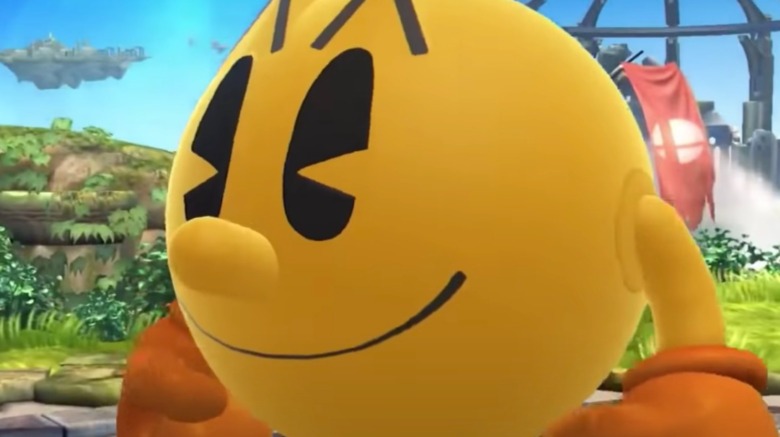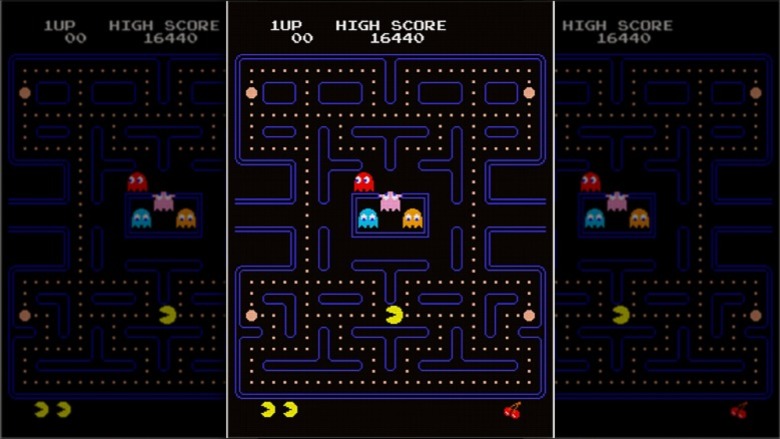This Was The Real Inspiration Behind Pac-Man
Nintendo Switch owners everywhere mourned the death of "Mario 35," but in its place, another game came to life. In April 2021, "Pac-Man 99" arrived as a battle royale that reminded the world that the '80s arcade icon is still king.
The "Pac-Man" franchise is worth a staggering amount of money, and there are countless different ways to play the game. For a limited time, you could even play "Pac-Man" using a pizza box. Basically, it was only a matter of time before the classic game received the battle-royale treatment.
Now that fans are back to chomping power pellets once again, you may be curious to learn a few facts that even the most die-hard gamers don't know. You might already know what the "Pac" stands for in "Pac-Man," or the differences between all of the ghosts, but what about the Man himself? How did that iconic phantom-eating champion come into existence? What was the real inspiration behind the lovable and iconic title character?
Pac-Man's universal appeal
Pac-Man owes his existence to out-of-the-box thinking, which is ironic when you consider the fact that he is constantly trapped in a box-like maze. According to CNN, Toru Iwatani, the mind behind the arcade staple, was looking to create something different from the typical alien shooter. At the time, the video game market was largely targeted towards a male audience, and he wanted to make something women would enjoy as well.
While searching for a concept that would appeal to female gamers, he had what he considered to be a "presumptuous" thought: that women might like a game that featured eating as the main action (no, seriously). From there, he continued to flesh out his ideas until inspiration struck him in an unlikely place: a pizza box. Inside that box, the future awaited as he lifted a slice and had a vision of his hero. Thus, Pac-Man was born.
In an interview with The Washington Post, Iwatani explained that the dynamic between his yellow hero and the ghosts was based on the old "Tom and Jerry" cartoons. Calling upon the philosophy of "wabi-sabi," which focuses on the "beauty and depth in simplicity," Iwatani made sure that all his characters lacked defining characteristics. This simple design philosophy would lead to one of the most recognizable icons in pop culture history.


